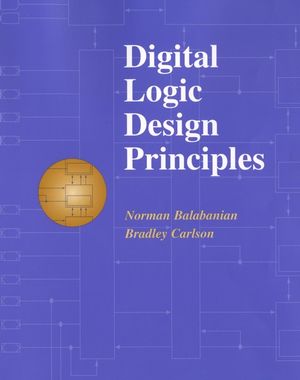|
Textbook
Digital Logic Design PrinciplesISBN: 978-0-471-29351-4
Hardcover
400 pages
November 2000, ©2001
 |
||||||
- Hands on exercises throughout the text.Provides reinforcement for the concepts under study by having students carry out some simple calculations and apply results then under discussion. Solutions are provided in footnotes for independent solving of problems and immediate confirmation of their work.
- New topics introduced in an exploratory spirit. Students develop an understanding of how and why certain methods were invented, and the motivation for doing things. This should be helpful for future tasks they will confront, and keep interest at a high level due to their involvement.
- Later chapters present up-to-date approaches in logic design. Design with hardware description languages is presented. ABEL is used to minimize the burden of complex semantics that other, more powerful languages would require, thus, exposing students to modern design methods with a minimum learning curve.
- Relationship between digital system design and computer architecture is taught. Simple computer architectures are introduced to bridge the gap between logic design and computer design. This allows the student to understand how the concepts in digital design in earlier chapters relate to modern computer systems.



